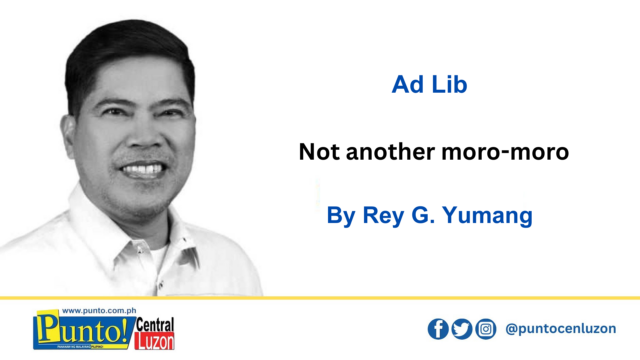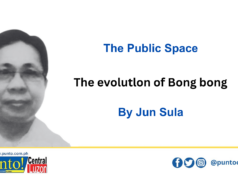AT THE rate things the anomalous flood-control projects in the country are unearthed one after another, I couldn’t help but ask: can the Philippine Congress actually investigate its own? Will the investigation lead to the imprisonment of the erring contractors and the dismissal of all government officials involved in this grand scale corruption?
Over the past weeks, alarming revelations that flood control projects across Bulacan, Pampanga, Oriental Mindoro, La Union, and beyond are either substandard or totally non-existent have reverberated along the halls of the Philippine House and Senate. Apparently, this came as a shock to our honorable lawmakers. Honestly, I could no longer decide which one is more insulting and utterly frustrating. Is it the staggering amount of money lost to corruption or these claims by our esteemed lawmakers that they are not even aware of these irregularities? Given the alarming truth that many of these flood control projects were inserted by the lawmakers themselves, the obvious answer would have to be both.
On top of what Senator Panfilo Lacson said in his August 20 privilege speech that at least half or roughly ₱950 billion of the nearly ₱1.9 trillion spent on flood control since 2011 may have been lost to corrupt schemes, we should also focus our attention on the contractors that have cornered a lion share of the budget for these flood control projects.
In Bulacan’s 1st Engineering District alone, contractors like Wawao Builders, with initial paidup capital as low as ₱50 million, cornered ₱4.2 billion in contracts; MG Samidan Construction (₱250,000 capital) got ₱5.02 billion; QM Builders (₱1.25 million) secured ₱7.38 billion.
These figures speak volumes: impoverished shell companies winning multibillionpeso contracts are structurally incapable of delivering quality flood protection.
Lacson also highlighted a staggering surge in the Candating project in Arayat – afrom ₱20 million in 2018 to ₱91.6 million in 2023, ₱183 million in 2024, and a proposed ₱100 million in 2025 that was halted by Malacañang—representing an overall cost that ballooned to more than 800%. Despite being delisted already by the Department of Human Settlements and Urban Development as of January 2023, the contractor, Eddmari Construction, still secured nearly ₱275 million in contracts.
And so, we go back to the earlier question: can a body investigate its own members objectively and thoroughly? With legislators related to big-time contractors, with contractors-turned-party list representatives and with lawmakers themselves as “funders” or “proponents,” conflict of interest is embedded into the system. So how can the internal investigation be trustworthy when the very investigators may be implicated? Why not a separate, external, independent audit if the end goal is the truth and nothing but the truth?
True accountability demands the “certainty of punishment.” Lacson couldn’t have stated it more rightly: convict and jail the big fish, or corruption will continue unchecked. These people, regardless of their position, influence and power deserve the full weight of the law.
Now that President Marcos has ordered a comprehensive audit of flood control projects and vowed to expose and prosecute corruption in flood control projects, the only credible path forward is full transparency.
Let us demand for the publication of the complete names of legislators behind budget insertions, open flood project data to citizens via platforms like sumbongsapangulo.ph, and ensure prosecutions follow. Otherwise, investigations risk becoming another moro-moro rather than meaningful justice. Without full transparency, the ongoing inquiry will turn out to be another performative theatre – slightly different cast and story but with the same result that will not in any way benefit the Filipino people.
We deserve more than this cycle of corruption-investigation-more corruption. We deserve more than flood control – we need greed control.
(Sources: Senate of the Philippines, Philippine News Agency, Daily Tribune, Philstar.com)





